6 Daily Exercises to Improve Total-Body Mobility

Your skeleton works wonderfully when everything is aligned, but as you go through life, your muscles develop and grow based on your habitual movement patterns, which often lead to imbalances. People try to correct these by working on flexibility — passively working to achieve an extended range of motion. And flexibility is important, but you also should work on mobility. Mobility is not passive. It uses strength to control range of motion and promotes neuromuscular mastery.
A good way to improve mobility is through the use of controlled articular rotations. The goal of CARs is to move each individual joint in active rotation, tracing the biggest circle possible while maintaining total-body tension to isolate the joint and prevent other muscles from engaging. CARs help build new connective tissue in your joint capsules and improve alignment, and they also can up-level your range of motion and ultimately your lifts. Practice your CARs first thing in the morning or as part of your preworkout warm-up.
Knees
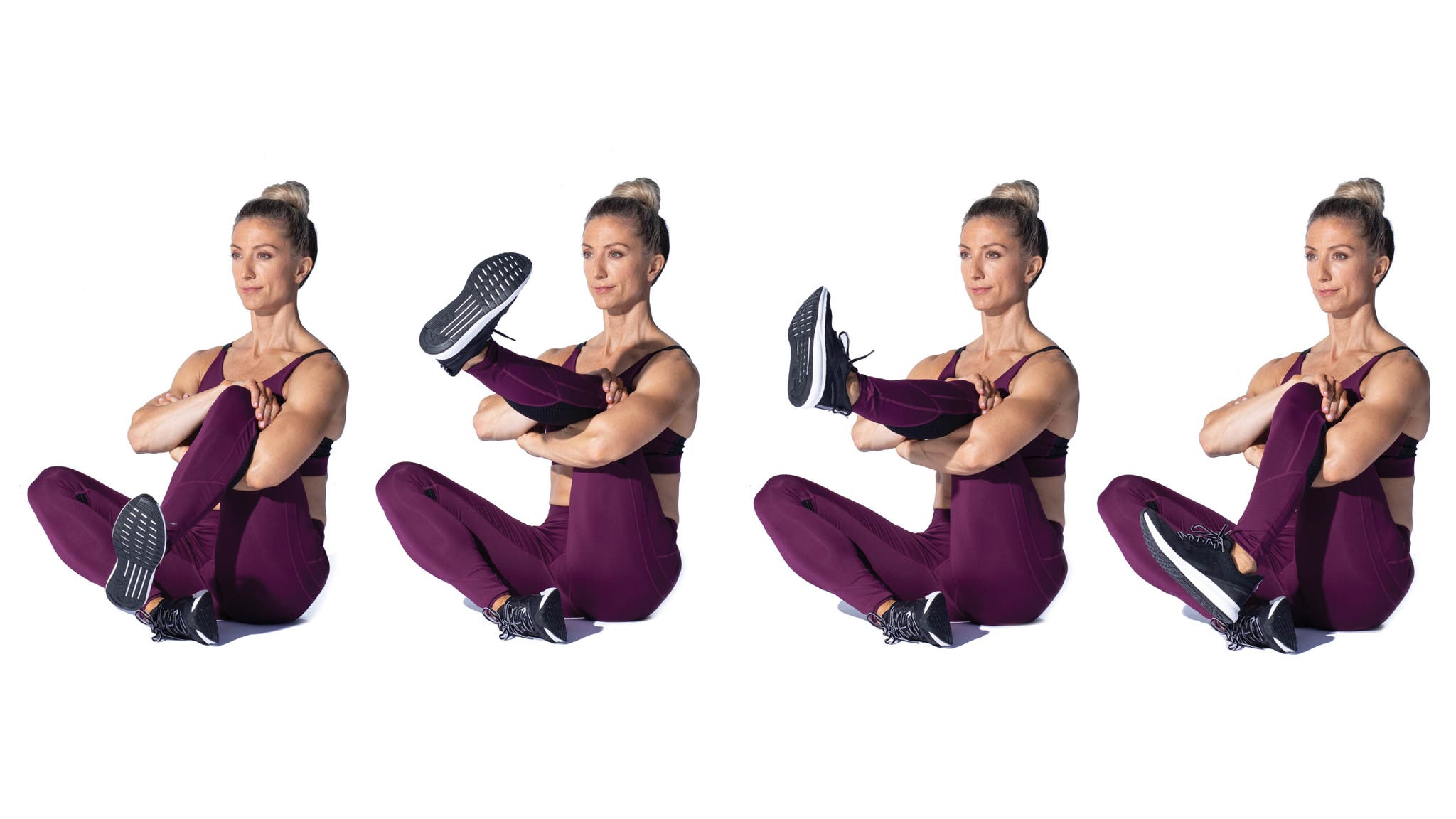
Can improve strength and protect the joints during torqueing and lateral movements.
Sit with your knees bent, feet flat on the floor. Place your right hand on top of your left knee, thread your left arm underneath and grasp your right forearm with your left hand to lock your upper thigh into place. Flex your foot and knee, then externally rotate your tibia. Maintain this external rotation as you extend your leg, then at the top internally rotate your tibia. Maintain that rotation as you bend your knee to return to the start. Repeat three to five times in both directions, then switch legs.
Tip: Your thighbone will want to help with the internal and external rotation, so keep your eyes on it to make sure it stays still.
Cervical Spine
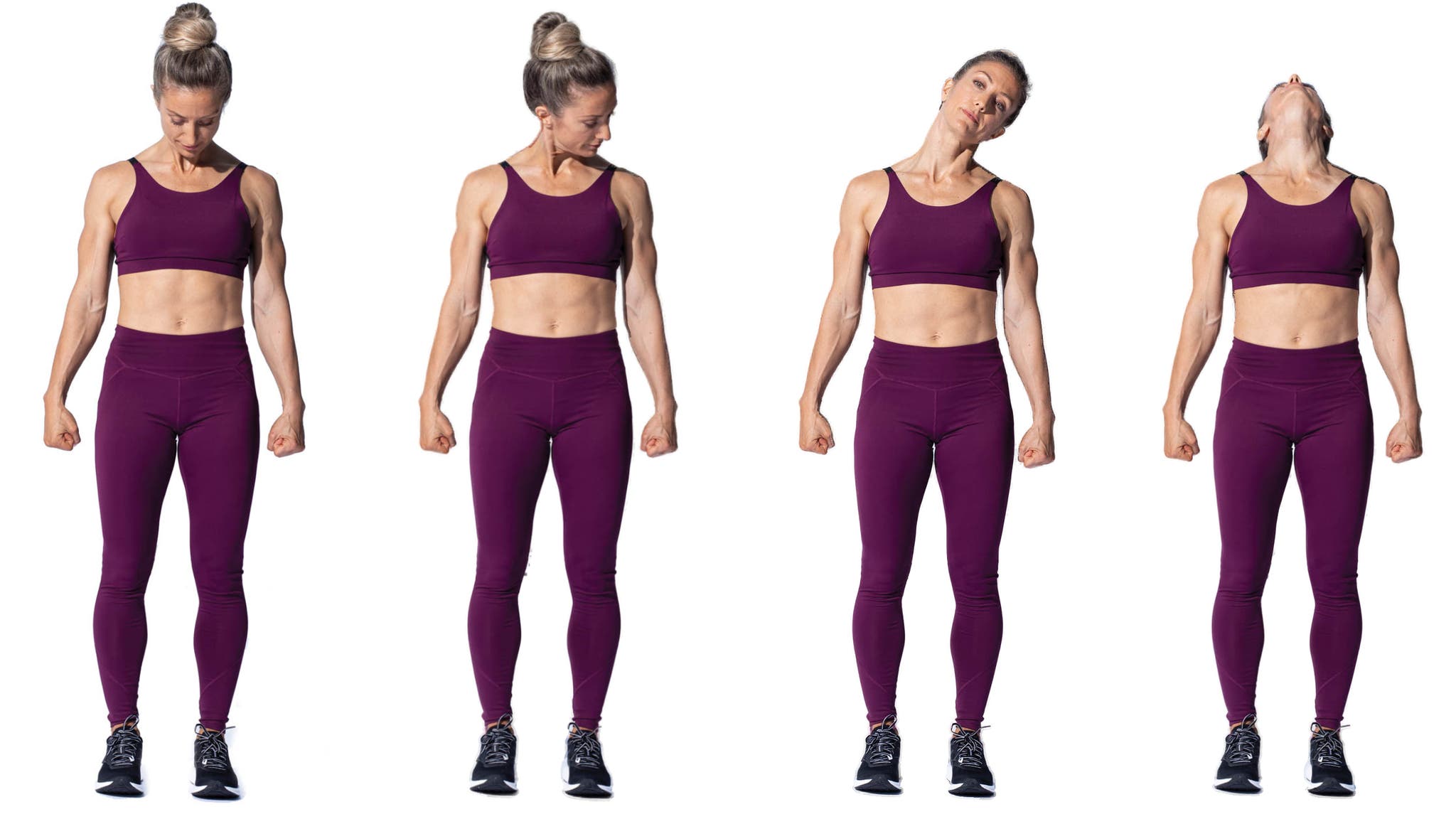
Can help improve overhead lifts and reduce neck pain.
Stand with your arms at your sides and drop your chin toward your chest, flexing it without force. Slide your chin along your left collarbone, then laterally tilt your head to the left. Continue around and extend your neck rearward. Roll your head toward your right shoulder, then laterally tilt your head to the right. Trace your chin along your right collarbone and return to the start. Repeat three to five times in each direction.
Tip: Your shoulders should stay down and your traps should remain relaxed throughout.
Scapulae
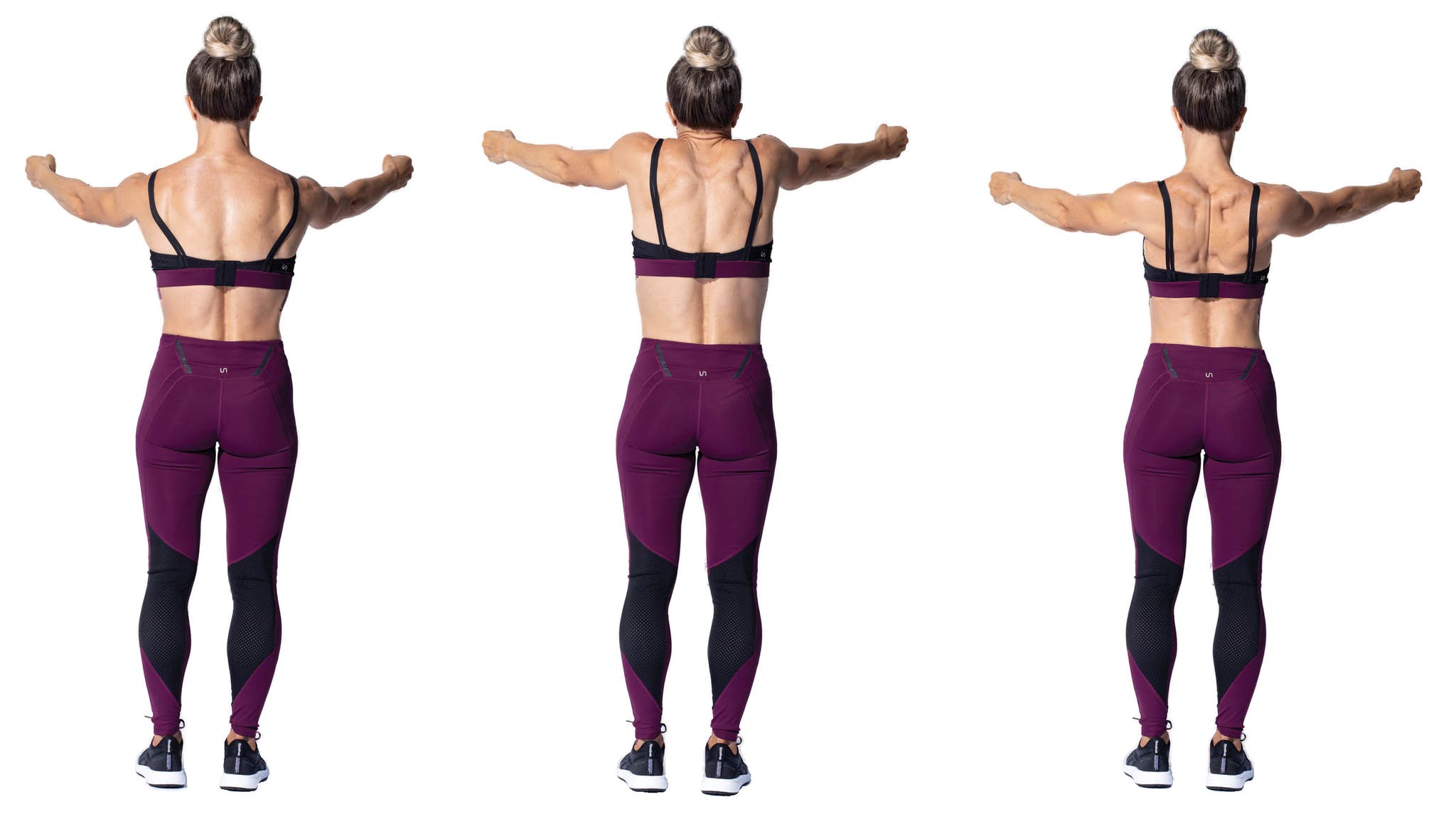
Can help with joint stability and efficient arm movement.
Raise your arms out to the sides about 2 inches above your shoulders, palms facing forward. Keep your arms raised as you draw a smooth circle on your back with your scapulae: Raise them up toward your ears, then pull them around and in toward your spine. Circle down and depress them, then raise them up and away from your spine. Do three to five reps in each direction.
Tip: Stand tall as if there were an imaginary string attached to the crown of your head lengthening your spine.
Wrists
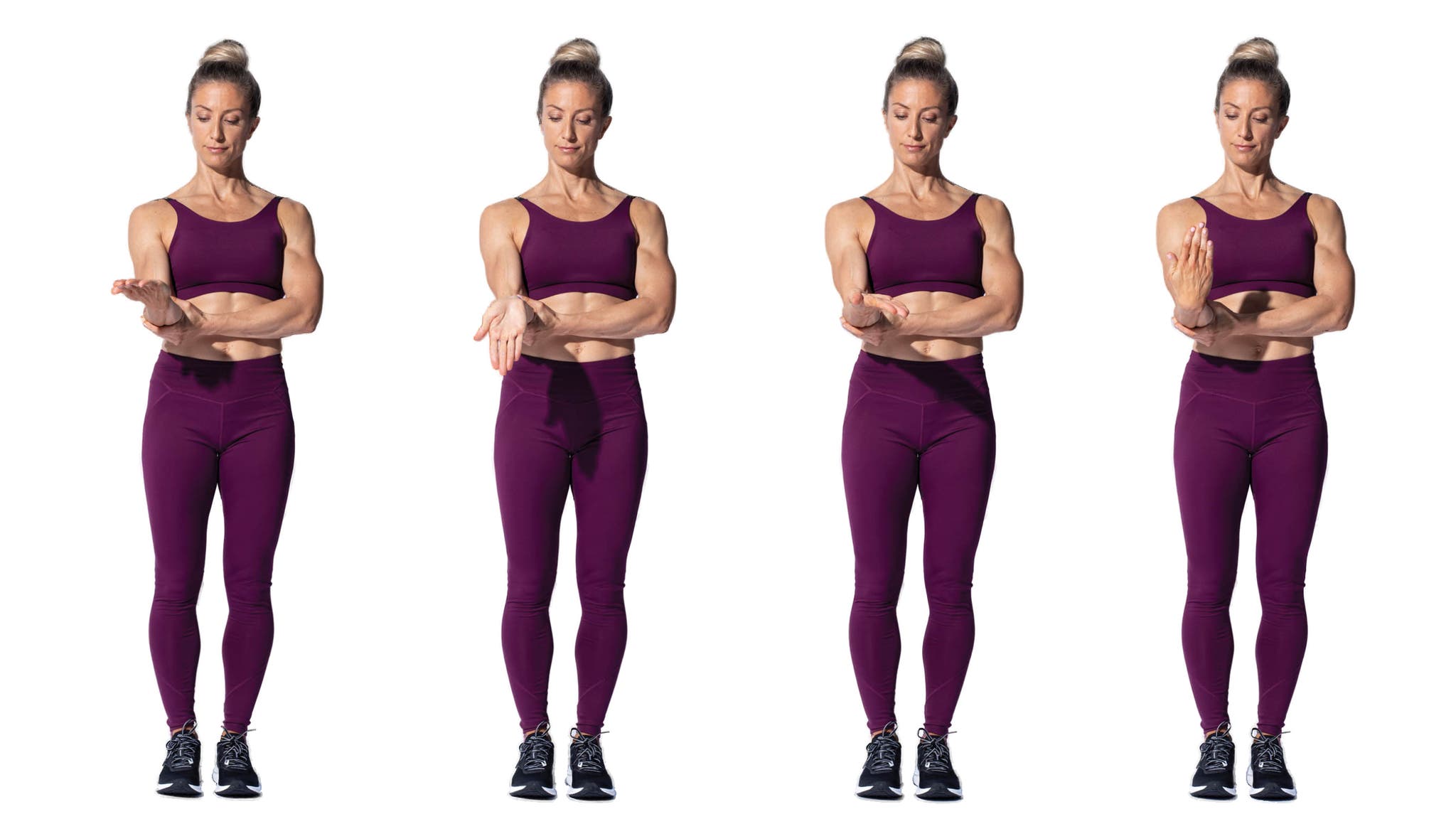
Can help with gripping, twisting, front rack position and planks.
Bend your right elbow 90 degrees and pin your upper arm to your side, palm facing upward, and hold your forearm with your left hand for stability. Slowly circle your wrist laterally to the right, then into extension followed by internal flexion and finally finishing in full flexion. Repeat three to five times in each direction, then switch hands.
Tip: Don’t bend your fingers. Keep your palm open and flat and squeeze your fingers together to maintain tension.
Ankles
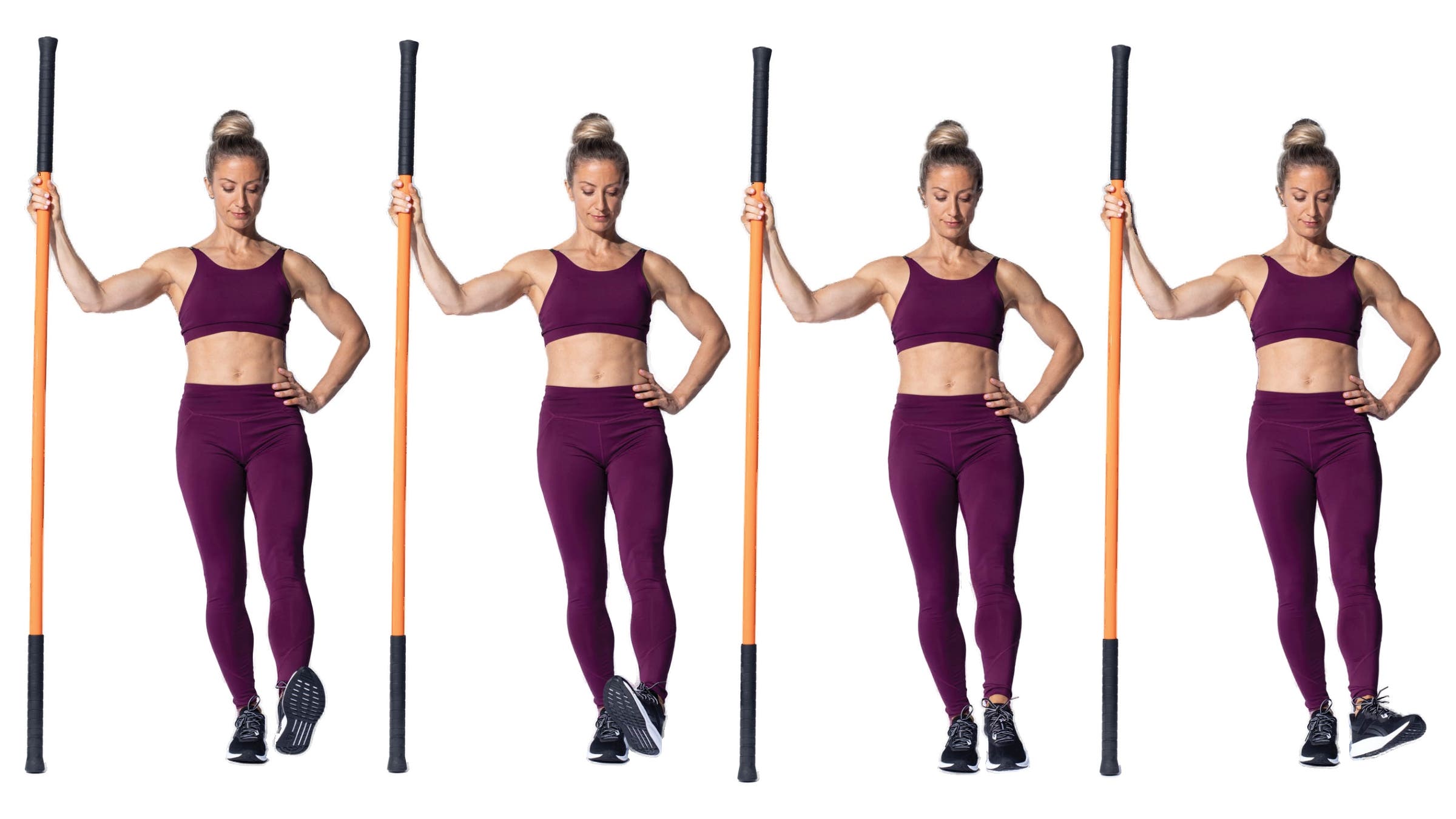
Can help improve squatting, running gait and balance.
Stand and hold onto a pole or stable object with one hand. Extend one leg in front of you a few inches off the floor and flex your foot. Draw a slow counterclockwise circle with your foot, starting with lateral flexion and moving to plantar flexion (toes pointed), then internal flexion and finally back to the start. Do one minute in each direction, then switch feet.
Tip: This also can be done seated if you’re having issues with balance.
Hips
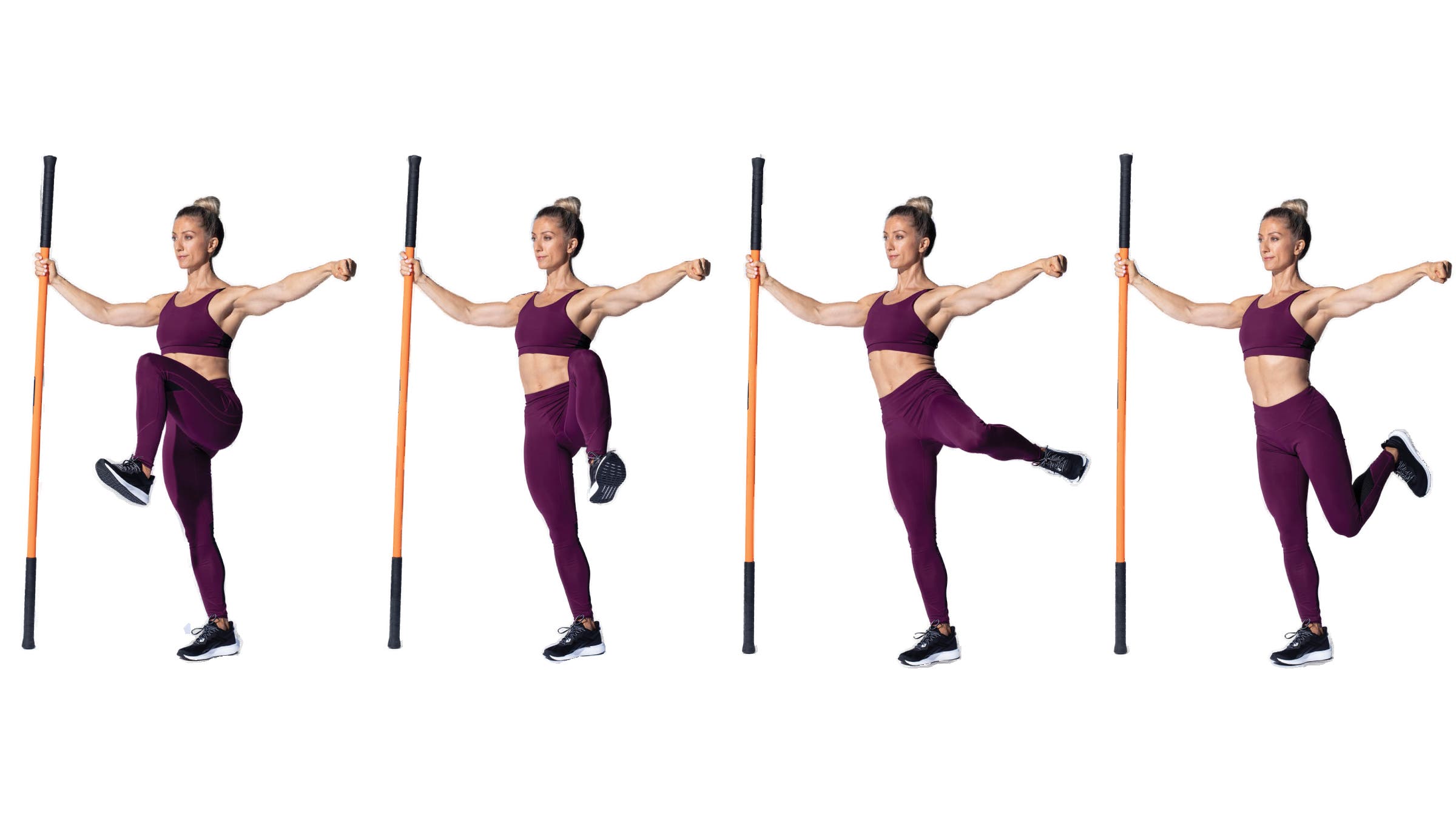
Can improve power and speed and decrease risk of back pain or injury.
Stand with your feet hip-width apart and hold onto a pole or stable object with your right hand. Extend your left arm out to the side at shoulder height and make a fist. Lift your left leg in front of you, knee and hip bent 90 degrees, and externally rotate your hip in the socket. Lift your knee and ankle parallel to the floor (or as close as you can get) as you continue to open your hip, then abduct your leg rearward to come into hip extension. Bring your leg back through to the start, then reverse these steps to move in the opposite direction. Repeat three to five times on each leg.
Tip: Keep your hips as level as you can, and don’t worry if you can’t raise your leg very high initially — that will come with time and practice.